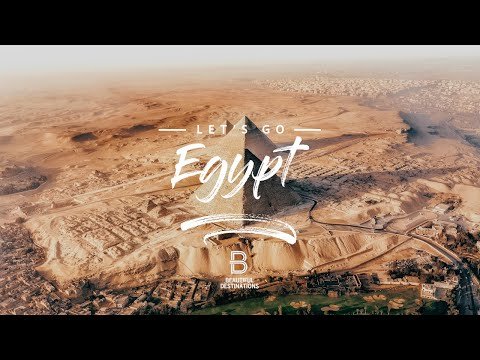Egypt is a captivating country, rich in history and cultural significance, and home to one of the world’s earliest and most influential civilizations. We show you in this article the best Places to Visit in Egypt From the majestic pyramids of Giza to the bustling streets of Cairo, Egypt offers a fascinating glimpse into an ancient world that still shapes modern society. What makes Egypt a must-visit destination is its unique blend of ancient wonders and contemporary vibrancy.
Its renowned archaeological sites, such as the Valley of the Kings and the Great Sphinx, showcase the grandeur of ancient Egypt, while the dynamic cities and landscapes offer a striking contrast between past and present. Whether exploring the temples of Luxor, relaxing at Red Sea resorts, or wandering through the oases of Siwa, Egypt’s diversity of attractions ensures there’s something for every traveler. In short, Egypt is not just a place to visit—it’s an experience, where every corner tells a story waiting to be discovered.
Cairo and Giza: Ancient Wonders and Hidden Gems
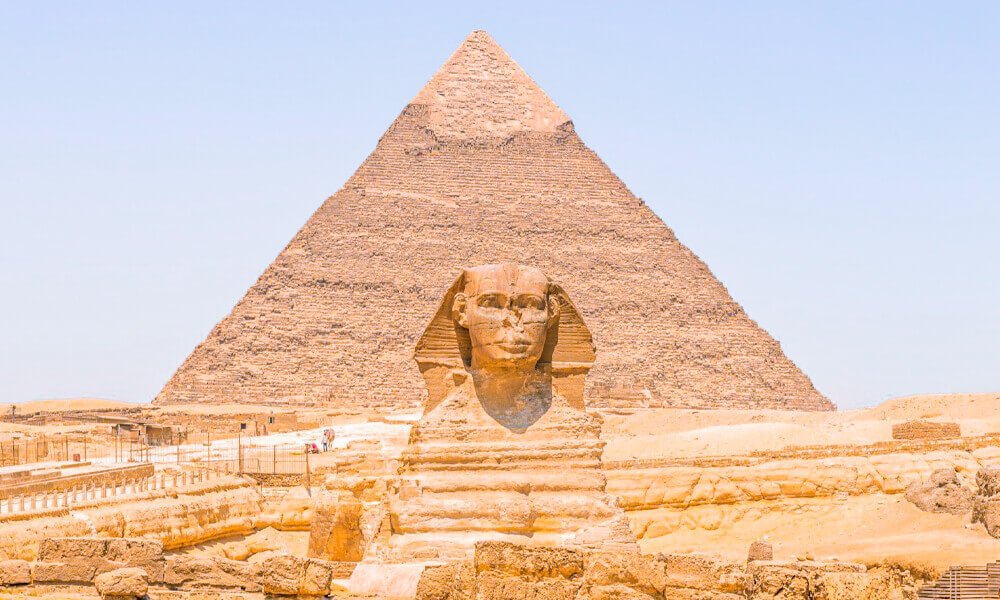
The Giza Governorate, home to the iconic Pyramids of Giza, is one of Egypt’s most famous destinations, rich in ancient history and archaeological wonders. While the Great Pyramids and the Sphinx steal the spotlight, the area also features lesser-known gems that offer deeper insights into Egypt’s ancient civilization. Just a short distance away, Cairo, Egypt’s sprawling capital, is a vibrant city where ancient history blends seamlessly with modern life. As the largest city in the Arab world, Cairo is a cultural hub, offering everything from awe-inspiring pyramids to bustling markets, making it an unforgettable destination for travelers seeking both history and contemporary energy.
1- The Great Pyramids of Giza & Sphinx
The Pyramids of Giza One of The best places to visit in Egypt, located just outside Cairo, are undoubtedly the most iconic landmarks in Egypt. These colossal structures, built as tombs for the Pharaohs, have stood for over 4,500 years, making them one of the Seven Wonders of the Ancient World. The Great Pyramid of Khufu (also known as Cheops) is the largest and most impressive, while the Pyramids of Khafre and Menkaure stand beside it. These awe-inspiring monuments symbolize the might and ingenuity of ancient Egyptian civilization.
The Great Sphinx, a colossal limestone statue with the body of a lion and the head of a Pharaoh (believed to represent Khafre), sits at the base of the Giza Plateau. This mysterious monument has fascinated visitors for centuries, with its enigmatic smile and unclear origins still a topic of debate. Though some believe it was built during the reign of Pharaoh Khafre, others suggest it dates back even earlier.
2- Saqqara: The Ancient Necropolis
Located just outside Cairo, Saqqara is one of Egypt’s most important archaeological sites, renowned for its historical significance and vast collection of tombs and pyramids. As the burial ground for Egypt’s early dynasties, it offers a fascinating glimpse into ancient Egyptian culture and architecture. The Step Pyramid of Djoser, built around 2670 BCE by architect Imhotep, is the centerpiece of Saqqara and considered the first true pyramid. Its unique multi-step design marked a shift from earlier mastaba tombs and laid the foundation for the later pyramids at Giza. Visitors can explore the pyramid complex and surrounding tombs, many adorned with intricate hieroglyphs and carvings that reveal ancient burial practices and beliefs about the afterlife.
Saqqara also boasts a large necropolis with richly decorated mastabas of priests, nobles, and officials, including the famous tomb of Ti, known for its well-preserved wall scenes. The Serapeum of Saqqara, a burial site for sacred Apis bulls, is another key feature, with massive chambers that once housed the mummified bulls considered to be living gods. Quieter and less crowded than Giza, Saqqara offers a more relaxed experience, making it an essential stop for anyone interested in Egypt’s early history and architectural achievements.
3- Memphis: The First Capital of Ancient Egypt
Located just 24 kilometers south of Cairo, Memphis was the capital of Ancient Egypt during the Old Kingdom and a key center of culture, religion, and politics for over 3,000 years. Founded by Pharaoh Menes around 3100 BCE, it was Egypt’s first capital and remained a seat of power until the New Kingdom, when the capital moved to Thebes. Despite much of the city being lost over time, Memphis still offers significant archaeological remains. The Open-Air Museum is home to remarkable statues and artifacts, including the massive colossal statue of Ramses II and the Alabaster Sphinx, believed to represent Amenemhat II.
The museum, along with various stelae and reliefs, offers insights into daily life, royal rituals, and religious practices in ancient Egypt. One of Memphis’ most important religious sites was the Temple of Ptah, dedicated to the creator god, though little of it remains today. Despite the loss of its architectural grandeur, Memphis continued to be a religious hub for centuries, attracting pilgrims to honor Ptah. Today, visitors can explore the ruins and statues that tell the story of one of Egypt’s most influential ancient cities, showcasing its historical and spiritual legacy.
4- The Egyptian Museum
A visit to Cairo would not be complete without exploring the Egyptian Museum, which houses an extraordinary collection of ancient Egyptian artifacts. While the museum remains home to a wealth of treasures, many of King Tutankhamun’s famous items, including his iconic gold death mask, have now been relocated to the newly opened Grand Egyptian Museum near the Giza Pyramids. However, the museum still showcases an unparalleled collection of ancient relics, including mummies of former pharaohs, intricate jewelry, and monumental statues. Visitors can explore vast halls filled with artifacts from Egypt’s dynastic periods, offering insights into the grandeur and daily life of one of the world’s oldest civilizations.
5- Coptic Cairo
Coptic Cairo, is a historic district that offers a glimpse into Egypt’s early Christian and Jewish heritage. Among the key attractions is the Hanging Church (Saint Virgin Mary’s Coptic Orthodox Church), an ancient church suspended above the ground. The Ben Ezra Synagogue, a Jewish house of worship with a history dating back to the 9th century, is another must-see. This area is also home to the Coptic Museum, which showcases Christian artifacts from Egypt’s long and storied history.
6- Al-Moez Street and Khan El-Khalili Bazaar
Al-Moez Street, one of Cairo’s oldest streets, offers a fascinating journey through Islamic Cairo with its stunning medieval architecture and historic mosques. The street is filled with shops, cafes, and street vendors, creating a vibrant atmosphere. Just off Al-Moez Street, Khan El-Khalili Bazaar is one of the most famous markets in the Arab world. Here, you can haggle for everything from spices and textiles to jewelry and antiques, all while soaking in the atmosphere of a market that has been in operation since the 14th century. The blend of shopping, culture, and heritage makes this area a must-visit for any traveler looking to experience the soul of Cairo.
Alexandria: The Mediterranean Pearl
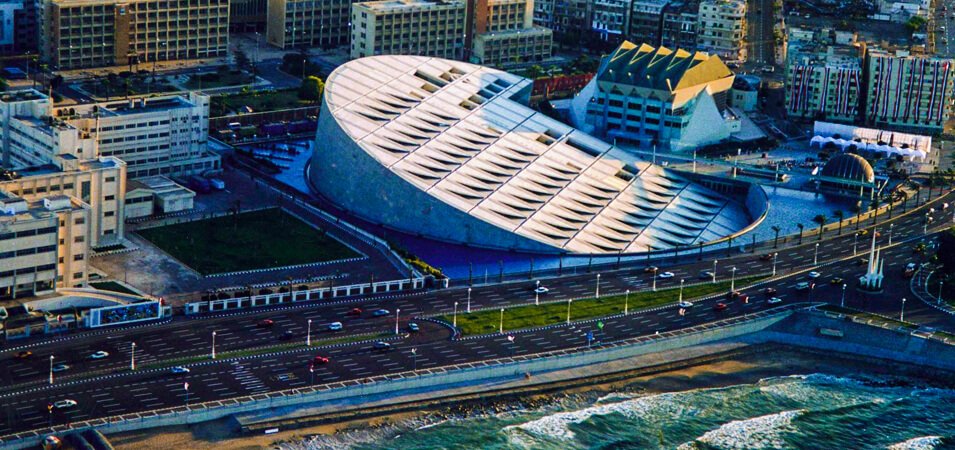
Alexandria, Egypt’s second-largest city, sits on the Mediterranean coast and boasts a rich history that has made it a crossroads of cultures for millennia. Once a hub of knowledge, culture, and trade in the ancient world, Alexandria continues to charm visitors with its unique blend of ancient landmarks and modern attractions. Whether you’re wandering through Greco-Roman ruins or relaxing by the sea, Alexandria offers a diverse and unforgettable experience.
7- Bibliotheca Alexandrina
The Bibliotheca Alexandrina, a stunning modern library, stands as a tribute to the legendary ancient Library of Alexandria, one of the greatest centers of learning in the ancient world. Although the original library was destroyed centuries ago, the new Bibliotheca has revived its spirit. Opened in 2002, the library’s sleek, futuristic design features a giant tilted disc as its roof, symbolizing the sun. Inside, visitors can explore not only vast collections of books in multiple languages but also exhibitions on the history of the ancient library and the intellectual legacy of Alexandria. The library also hosts museums, art galleries, and cultural centers, making it an intellectual and cultural epicenter of the city.
8- Catacombs of Kom El Shoqafa
The Catacombs of Kom El Shoqafa provide a fascinating glimpse into the Greco-Roman period of Alexandria. Discovered in 1900, these catacombs are a unique blend of Egyptian, Greek, and Roman burial traditions. The site includes several levels of underground tombs, with intricate carvings and frescoes that depict a fusion of cultural influences. One of the most remarkable features is the “Triclinium,” a banquet hall where families would gather to honor their deceased loved ones. The catacombs’ mix of architectural styles—Egyptian, Roman, and Hellenistic—reflects the multicultural nature of ancient Alexandria, making it an essential stop for history buffs.
9- The Roman Theatre
One of Alexandria’s lesser-known gems, the Roman Theatre is a fascinating archaeological site that offers a glimpse into the city’s vibrant Greco-Roman past. Located in the heart of Alexandria’s historic center, this well-preserved theatre is a testament to the cultural exchange between Egypt and the Roman Empire during the 2nd and 3rd centuries AD. The theatre is unique for its semi-circular design, which is typical of Roman theatres, and its remarkable acoustics, allowing even the faintest sounds to carry across the stage. The theatre could originally accommodate up to 800 spectators, with marble seating arranged in tiered rows, all facing the stage. Today, visitors can sit on the original stone seats and imagine the performances of ancient actors or musical recitals that once captivated audiences in this lively coastal city.
Luxor: The Open-Air Museum
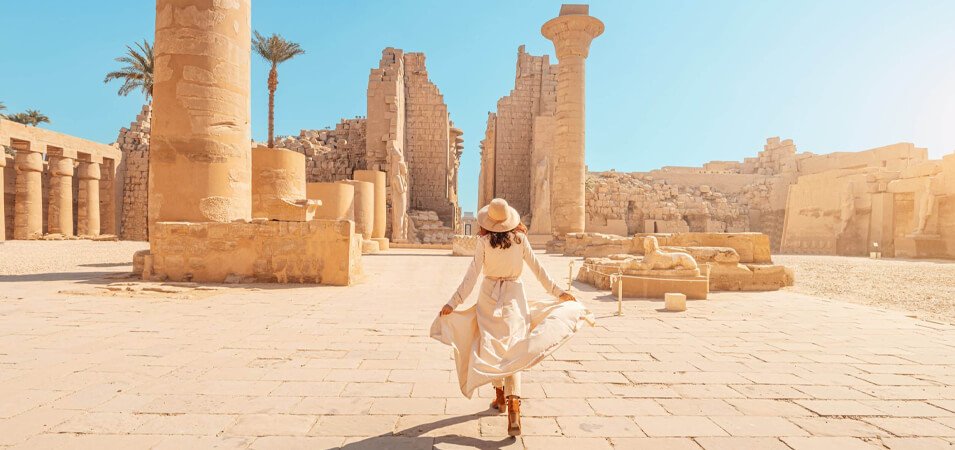
Often referred to as the “world’s greatest open-air museum,” Luxor is a city steeped in ancient history, where the remnants of Egyptian civilization stretch as far as the eye can see. Located on the banks of the Nile, Luxor is home to some of Egypt’s most iconic temples, tombs, and monuments, making it an essential destination for anyone interested in exploring the wonders of ancient Egypt. Its wealth of archaeological sites, including the vast Karnak Temple, the Valley of the Kings, and Luxor Temple, offers a rich and immersive experience into the heart of Egypt’s Pharaoh-driven past.
10- Karnak Temple Complex
The Karnak Temple Complex, one of the largest and most impressive temple complexes in the world, is the crown jewel of Luxor. Dedicated to the Theban triad of Amun, Mut, and Khonsu, the complex spans over 100 hectares and includes a series of temples, pylons, obelisks, and chapels. The Great Hypostyle Hall, with its 134 massive columns, is the most famous feature of Karnak and remains one of the largest of its kind in the world. The grandeur and scale of the site give visitors a sense of the immense power and religious importance that Karnak held in ancient Egyptian society. Over the centuries, many pharaohs added to the complex, contributing to its ongoing evolution. Visitors can explore various areas of the site, including the Sacred Lake and the Amun Temple, where massive stone statues and intricate carvings still tell the stories of Egypt’s divine kings and queens.
11- Valley of the Kings
The Valley of the Kings is perhaps the most famous burial site in Egypt, home to the tombs of many New Kingdom pharaohs, including the boy king Tutankhamun, whose tomb was discovered by Howard Carter in 1922. Located on the west bank of the Nile, the valley is set in a dramatic desert landscape and contains over 60 tombs, including those of the powerful Ramses II and the enigmatic Seti I. These tombs were carved into the cliffs and decorated with detailed scenes from Egyptian mythology, showcasing the pharaohs’ journey to the afterlife. Although many tombs were looted in antiquity, the tomb of Tutankhamun remains one of the best-preserved and continues to captivate visitors with its stunning wall paintings and treasures, which are now housed in Cairo’s Egyptian Museum and the Grand Egyptian Museum. Visiting the Valley of the Kings offers an unforgettable look at Egypt’s royal past and the intricate burial rituals of its rulers.
12- Luxor Temple
The Luxor Temple, located in the heart of the modern city of Luxor, is another marvel that shouldn’t be missed. Unlike many temples that were primarily used for funerary purposes, Luxor Temple was dedicated to the rejuvenation of kingship and was the center of the annual Opet Festival, which celebrated the divine power of the Pharaoh. The temple is famous for its towering statues of Ramses II and its elegant Avenue of Sphinxes, which once connected Luxor Temple to Karnak. The temple’s architecture is beautifully preserved, with reliefs depicting scenes of the pharaohs offering sacrifices to the gods. One of the most magical times to visit Luxor Temple is at night when the temple is beautifully illuminated, and the carvings on its walls glow under the soft light. This night-time ambiance makes the temple feel even more mystical and offers a powerful sense of connection to the ancient world.
Aswan: The Gateway to Nubia

Aswan, located in the southernmost part of Egypt, is often referred to as the “Gateway to Nubia” due to its proximity to the ancient land of Nubia, which stretches into modern-day Sudan. Known for its serene landscapes, crystal-clear waters of the Nile, and rich cultural heritage, Aswan offers a unique blend of iconic landmarks and natural beauty. The city has long been a center of trade, culture, and spirituality, making it a vital part of Egypt’s history. Whether you’re exploring its ancient temples or relaxing along the riverbanks, Aswan provides a peaceful escape and a fascinating window into Egypt’s past and Nubian culture.
13- Philae Temple
The Philae Temple, dedicated to the goddess Isis, is one of Aswan’s most iconic landmarks. Originally located on Philae Island in the Nile, the temple was relocated to its current location on Agilkia Island in the 1960s due to the construction of the Aswan High Dam, which threatened to submerge the original site. The relocation of Philae is considered one of the greatest feats of archaeological preservation, as the entire temple complex was carefully dismantled and reassembled on higher ground.
The temple itself is known for its stunning pylons, intricate hieroglyphs, and beautiful reliefs depicting the goddess Isis and her mythology. The site is not only a tribute to Egyptian art and architecture but also to the devotion to Isis, who was worshipped as a powerful goddess of love, fertility, and magic. A visit to Philae Temple offers a peaceful and mystical experience, especially when approached by boat as it floats majestically on the Nile.
14- Abu Simbel Temples
The Abu Simbel Temples are perhaps one of Egypt’s most extraordinary and awe-inspiring archaeological sites. Built by Pharaoh Ramses II in the 13th century BCE, the temples were designed to demonstrate the pharaoh’s power and devotion to the gods. The larger of the two temples features four enormous statues of Ramses II, seated in majestic grandeur, flanking the entrance. Inside, the temple’s walls are adorned with detailed reliefs depicting military campaigns, religious rituals, and the divine rule of Ramses II.
The smaller temple is dedicated to Ramses’ wife, Nefertari, and features beautiful statues of the queen alongside the king. In the 1960s, like Philae Temple, Abu Simbel was moved to higher ground to protect it from rising waters caused by the construction of the Aswan High Dam. The engineering marvel of relocating these colossal temples is a testament to human ingenuity and Egypt’s commitment to preserving its heritage. The temples are now accessible via a scenic drive or a boat ride, offering visitors a chance to marvel at the grandeur of ancient Egyptian architecture.
15- Nubian Villages
For those looking to immerse themselves in the local culture, a visit to one of Aswan’s Nubian Villages is a must. These vibrant communities, located on the banks of the Nile, offer a glimpse into the rich traditions and customs of the Nubian people, one of Egypt’s oldest ethnic groups. The Nubians are known for their distinctive language, colorful clothing, and warm hospitality. Visitors can explore the villages, wander through narrow streets lined with bright houses, and experience traditional Nubian crafts, music, and cuisine.
Many visitors are welcomed into local homes, where they can sample dishes such as fatta (a traditional Egyptian lamb and rice dish) and hear stories about Nubian history and culture. A visit to a Nubian village provides a deeper connection to the people of this region and offers a unique perspective on life along the Nile.
Red Sea & Sinai Peninsula: Where Desert Meets Sea

The Red Sea Governorates and the Sinai Peninsula are among Egypt’s most sought-after destinations, offering a blend of natural beauty, adventure, and cultural heritage. Stretching along Egypt’s eastern coastline from Hurghada in the north to Marsa Alam in the south, and extending to the rugged landscapes of Sinai, these regions feature stunning beaches, vibrant coral reefs, and a variety of outdoor activities. Whether you’re diving into the Red Sea’s depths, relaxing on pristine shores, or exploring ancient sites like Mount Sinai, these areas cater to both thrill-seekers and those looking for a tranquil escape, providing an unforgettable mix of adventure, relaxation, and spiritual discovery.
16- Sharm El Sheikh
Sharm El Sheikh is one of Egypt’s premier resort destinations, offering a perfect blend of luxury, adventure, and natural beauty. Located on the southern tip of the Sinai Peninsula, this popular beach town is famous for its world-class diving spots, crystal-clear waters, and vibrant coral reefs. The waters of the Red Sea are home to an incredible variety of marine life, making it a haven for divers from all over the world. Some of the top dive sites include the Ras Mohammed National Park, with its dramatic drop-offs and diverse underwater ecosystems, and the Straits of Tiran, known for its colorful coral gardens and deep, clear waters.
17- Dahab
A short drive north of Sharm El Sheikh, Dahab is a quieter and more laid-back alternative, attracting budget travelers, backpackers, and diving enthusiasts alike. Dahab’s relaxed atmosphere, vibrant Bedouin culture, and affordable accommodations make it an ideal place for those looking to escape the crowds while still enjoying the beauty of the Sinai Peninsula. The town is situated along the coast and is famous for its excellent diving and snorkeling spots, such as the Blue Hole, a world-renowned dive site known for its impressive coral formations and deep underwater caves.
18- Hurghada
Hurghada, one of Egypt’s most famous beach resorts, is a bustling destination known for its crystal-clear waters, thriving marine life, and vibrant nightlife. The town’s long stretch of coastline is dotted with luxury resorts, dive centers, and lively cafes, making it a perfect spot for both relaxation and adventure. Activities in Hurghada range from world-class diving and snorkeling to windsurfing, kite surfing, and desert safaris. The surrounding waters are home to some of the most spectacular coral reefs in the world, making it a prime spot for underwater exploration. Popular dive sites like Giftun Island, Shark’s Bay, and Mahmya Island are easily accessible by boat and offer an opportunity to swim alongside colorful fish, rays, and even dolphins.
19- Marsa Alam
A more tranquil and remote alternative to Hurghada, Marsa Alam is known for its secluded beaches and serene atmosphere. Located further south along the Red Sea coast, Marsa Alam offers a more laid-back, off-the-beaten-path experience. The area is perfect for travelers who want to escape the crowds and immerse themselves in nature. Diving in Marsa Alam is exceptional, with crystal-clear waters and abundant marine life. The reefs here are largely untouched, providing divers with pristine environments and the chance to explore underwater caves, coral gardens, and dramatic drop-offs. One of the most famous diving spots in the area is Elphinstone Reef, where divers can encounter large pelagic species such as hammerhead sharks, barracudas, and manta rays.
20- Mount Sinai and St. Catherine’s Monastery
The Sinai Peninsula is also home to some of the most important religious and historical sites in Egypt, with Mount Sinai standing at the heart of its spiritual significance. Revered by three major world religions—Judaism, Christianity, and Islam—Mount Sinai is traditionally believed to be the mountain where Moses received the Ten Commandments. Pilgrims and travelers from around the world hike to the summit, which offers panoramic views of the surrounding desert and the Gulf of Aqaba.
At the foot of Mount Sinai lies St. Catherine’s Monastery, one of the oldest continuously operating Christian monasteries in the world. Founded in the 6th century by Emperor Justinian, the monastery is a UNESCO World Heritage site and a spiritual hub for Christian pilgrims. Inside, visitors can admire the monastery’s rich history, including ancient religious manuscripts, icons, and one of the world’s oldest libraries. The site also boasts the Burning Bush, which, according to Christian tradition, is the place where Moses encountered the voice of God. St. Catherine’s Monastery is not only a center of spiritual devotion but also a significant historical site, offering a rare glimpse into the early Christian history of the region
Safari Adventures in Egypt: Exploring the Oases
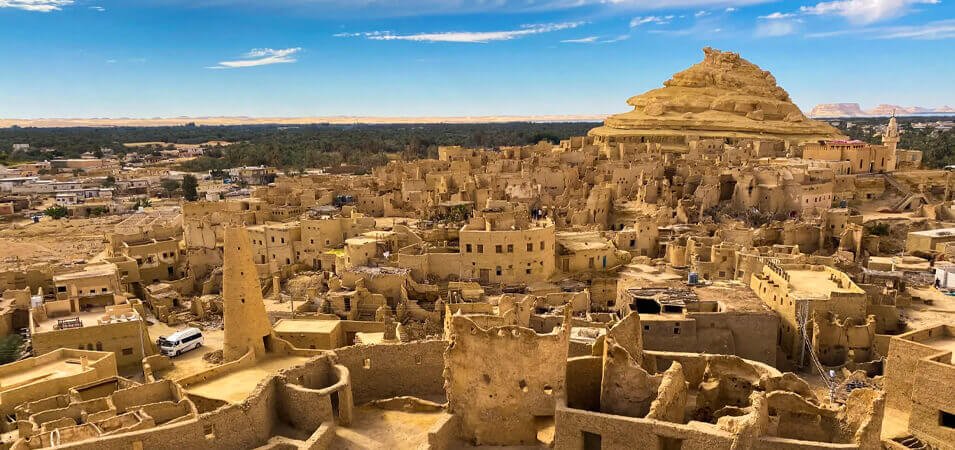
Egypt’s vast deserts are a treasure trove for adventure seekers, offering thrilling safari experiences that combine natural beauty, ancient history, and serene landscapes. Among the top desert destinations are the Bahariya Oasis, Fayoum, and Siwa Oasis, each offering unique opportunities to explore Egypt’s stunning desert scenery and rich cultural heritage.
21- Bahariya Oasis: A Gateway to the Black and White Deserts
Nestled in the heart of Egypt’s Western Desert, Bahariya Oasis is a verdant retreat surrounded by the stark, dramatic landscapes of the desert. It serves as a perfect starting point for those seeking to explore the Black Desert and the White Desert, both renowned for their unique geological formations and natural beauty.
Highlights of Bahariya Oasis:
- The Black Desert: Explore the dark volcanic hills and rocky terrain of the Black Desert by 4×4, discovering craters and sand dunes amid striking contrasts of black rocks and golden sands.
- The White Desert National Park: Famous for its unique chalk formations resembling mushrooms and icebergs, the White Desert is ideal for sunrise/sunset photography and stargazing while camping under the clear desert skies.
- Hot Springs and Salt Lakes: Relax in natural hot springs and float in the salt lakes, known for their healing properties, offering a rejuvenating retreat in the desert.
22- Fayoum: A Blend of History and Nature
Just a short drive from Cairo, Fayoum is an oasis that combines rich history with stunning natural beauty, making it a perfect getaway for those seeking both adventure and relaxation.
Top Experiences in Fayoum:
- Wadi El-Hitan (Valley of the Whales): A UNESCO World Heritage Site, Wadi El-Hitan is famous for its ancient whale fossils, offering a fascinating glimpse into the prehistoric era.
- Magic Lake and Wadi El-Rayan: Ideal for sandboarding, hiking, or simply relaxing by tranquil waters, these spots offer unique desert landscapes and opportunities for outdoor adventures Enjoy in Wadi El Rayan.
- Qasr Qarun Temple: Explore this well-preserved Ptolemaic temple, an important historical site that highlights Fayoum’s significance in ancient Egyptian history.
23- Siwa Oasis: A Hidden Gem of Tranquility
Nestled near Egypt’s western border, Siwa Oasis offers a peaceful retreat, known for its lush palm groves, crystal-clear springs, and rich cultural heritage, making it a serene destination far from the bustling crowds.
Must-Visit Spots in Siwa Oasis:
- Cleopatra’s Spring: A natural hot spring, perfect for a rejuvenating dip in its warm, mineral-rich waters.
- The Great Sand Sea: Explore this vast dune field with thrilling jeep safaris and sandboarding adventures.
- Shali Fortress: Wander through the ancient mud-brick fortress and enjoy panoramic views of the oasis and surrounding desert.
- Siwan Salt Lakes: Swim effortlessly in the salt-rich waters, famous for their healing properties and therapeutic benefits.
Conclusion: Best Places to Visit in Egypt
Egypt is a land of incredible diversity, offering a captivating mix of ancient wonders, vibrant cities, and serene oases. From the iconic Pyramids of Giza and the bustling streets of Cairo to the tranquil beauty of Siwa and Fayoum, Egypt provides something for every traveler—whether you’re exploring ancient tombs, relaxing by crystal-clear lakes, or venturing into the desert. The best time to visit is during the cooler months, from October to April, when the weather is ideal for exploration.
Be mindful of local cultural etiquette, such as dressing modestly at religious sites and asking permission before taking photos. Start planning your unforgettable journey to Egypt today and experience the magic of this timeless destination!

